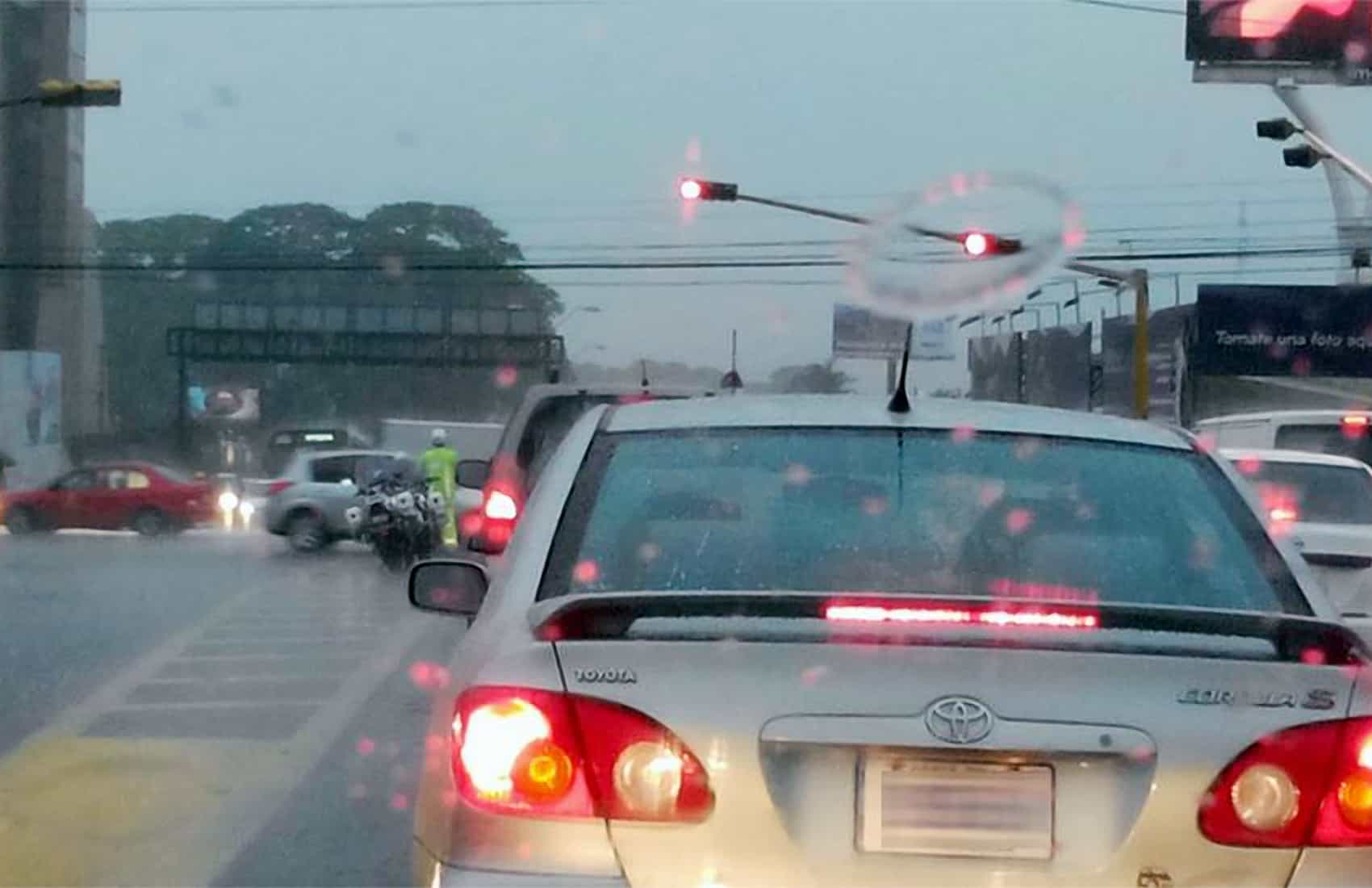Thousands of motorists have been forced to deal with the frustration of spending up to five hours stuck in traffic as the first days of the rainy season came with a spike in traffic jams and accidents across the country.
The most severe showers occurred Tuesday and Thursday, and came with a noticeable increase in the number and severity of traffic accidents.
Traffic Police director Mario Calderón said there was a spike in reports of traffic jams on both days, mostly on the main roads connecting the provinces of the Greater Metropolitan Area (GAM), which includes San José, Heredia, Alajuela and Cartago.
Between 2 p.m. and 10 p.m. last Tuesday, Traffic Police officers recorded a total of 266 accidents across the country, 123 of them in the capital San José. That’s 14 percent higher than the number of accidents recorded daily during the first quarter of this year, the Traffic Police reported.
Calderón said one person died as a result of a car accident last Tuesday, while two people were seriously injured in accidents in Alajuela and Heredia.
Another heavy shower on Thursday afternoon again caused chaos along the GAM’s roads. From 2 p.m. and 10 p.m., Traffic Police tallied 275 accidents across the country and 106 in the capital.
One of the most striking accidents was a bus that overturned on the San José-Alajuela route at 3 p.m. on Thursday. The bus skidded on a curve on the main road to Heredia province, near the Pirro River. Eight passengers were sent to the hospital with injuries, the Traffic Police reported.
Este fue el accidente de hoy en la tarde en el Pirro, Heredia pic.twitter.com/OOcLQhWl9f
— Ruta Alterna (@rutaalterna) June 2, 2016
Thursday’s rains also caused the collapse of an 8-meter-tall (26-foot) tree that fell on a taxi that was passing at night in front of Morazán Park, in downtown San José. The tree damaged the car, but the passengers escaped with only minor injures.
Also on Thursday, another tree along Florencio del Castillo Highway, which connects San José and Cartago, blocked vehicle traffic and train service between the two provinces for one hour.
Traffic Police Operations Director Hedmer Fallas Gamboa said Friday that the actual number of accidents could be higher because motorists sometimes agree to refrain from reporting an incident if there were no injuries or mayor damage to vehicles. A new insurance rule adopted in January allows drivers involved in minor accidents to move off the road without the assistance of a Traffic Police officer. Vehicle owners are required to exchange information and reach an agreement on vehicle damage by using a print form called a Declaration of Minor Accident (DAM).
President pledges solution to traffic
President Luis Guillermo Solís said Friday that he has received many complaints recently from citizens demanding expedited solutions to road and traffic troubles. Solís attributed the problems to the increase of vehicles in the country and the large number of people littering public spaces, which causes drains to clog up, leading to flooding and even more traffic jams.
“I want to tell all those who have complained that I deplore the fact that Costa Ricans keep throwing their garbage in any hole they find, including sewers. This is causing floods,” the president said.
Solís also called on citizens to consider public transport and carpooling as measures to reduce traffic jams.
Curbing traffic jams during rush hour was one of Solís’ campaign promises. Billboards along roads and on buses displayed the message: “Get home faster, spend less time in traffic jams.”
Last year, Solís experienced motorists’ frustration when he was running late to a public event due to heavy traffic in the capital.
Realidad vs Campaña: El presidente .@luisguillermosr víctima de las presas hace unos minutos en SJ pic.twitter.com/C3q4G2szHF
— Oscar Ulloa (@oscarulloa01) October 30, 2015
Solís said he plans to meet with officials from the Public Works and Transport Ministry and the National Roadway Council to outline actions to reduce the number of accidents and traffic jams. He also said he is working hard to improve train service, but that the traffic problems require other solutions as well, including reorganizing bus routes.
How to drive, bike and walk safe in the rain
Costa Rica has just 760 officers throughout the country, who must control traffic and also assist motorists in accidents.
Traffic Police Director Calderón asked drivers to exercise precaution during the coming months as the combination of rain, grease and oil on asphalt reduces the grip and traction of tires, and affects braking. He asked motorists to exercise defensive driving and follow these recommendations:
- Slow down during heavy rains
- Keep the air conditioner in good condition to prevent windshield fogging
- Keep the windshield and wipers clean to maintain optimum visibility
- Periodically check that all vehicle lights work properly
- Slow down when crossing speed bumps, manholes and train tracks
- Keep proper distance between vehicles
- Replace worn tires
- Make sure tires are property inflated according to the manufacturer’s recommendations
- Check brakes, suspension and steering systems frequently
- Motorcyclists and cyclists should always wear reflective clothing on rainy days
- Pedestrians should also wear reflective clothing or carry flashlights when walking along roads in dark areas or during heavy showers
- Pedestrians should cross streets only at corners, use pedestrian bridges and always respect traffic lights





